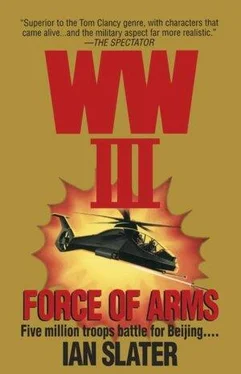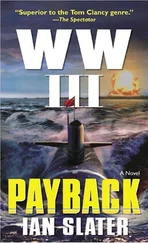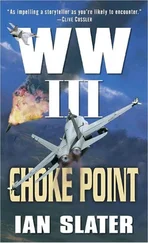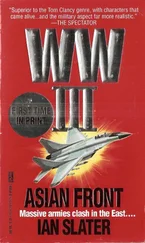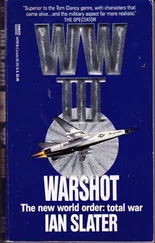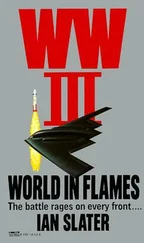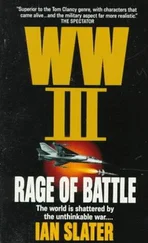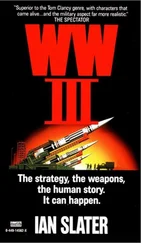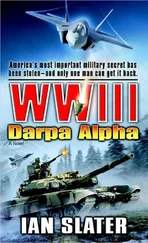* * *
After the briefing, Norton mentioned to the general that he hadn’t seemed too pleased when Aussie Lewis had made the comment about hoping Mao was dead.
“Well I’ll tell you, Norton, first, you’re damned observant — as usual. Second, Mao’s memory is one of the unknown factors in this. I believe I’m right in assuming the minorities are with us, and a good many of the Han Chinese even though they’re in the majority. But I don’t underestimate the power of myth — the myth of Mao. He’s beyond death — he’s a god for the godless, and invoking his name alone may cause an otherwise rebellious Chinese to hesitate. That’s why it’s so damned important to keep civilians out of this as far as possible — I mean not out of it, but no mass bombing over any Chinese town — to make it clear to them that we’re only going for those corrupt warlords who call themselves the Communist leadership.”
Freeman’s uncertainty gave Norton a pulse-jarring moment, but Freeman was still the gambler, the general who had turned a number of different situations here and abroad to his own advantage, from Ratmanov Island and the Dortmund-Bielefeld Pocket to Lake Baikal. In any event, Norton could see it was too late to abort, even if the general did have second thoughts. Like most great battles, at one point one is too far inside the enemy territory to pull out, even if you want to. They were too deep into China, and the awesome bureaucracy needed to coordinate the separate attacks as one offensive was too far along to stop, for it had, like all bureaucracies, attained its own momentum. It was either win this battle or Cheng would have time to get his second wind and redirect his three-million-man army to devour Second Army piecemeal.
* * *
At Orgon Tal, Three Corps was already preparing for the offensive that would be launched simultaneously with the SAS/D attack on the Zhongnanhai, and at Honggor three divisions limbered up for an advance, the star players being those halfway along the line, for these would bear the frontal attack on the Great Wall nearest Beijing, the forces at Orgon Tal and Honggor sweeping in from the west and east respectively to close about Beijing in a giant pincer movement.
The backbone of the forces at the midpoint was comprised of the eighteen-mile-range towed M198 155mm howitzer and the self-propelled M109 155mm howitzer with a range of eleven miles and a speed of thirty-three miles per hour that made the monolithic weapon the mostversatile of the heavy field guns in the U.S. armory, the turret having a full width bustle in which twenty-two rounds of ammunition could be stored, including HE, chemical, smoke, flare, and, if needed, nuclear.
Anticipating massed infantry charges after initial penetration by ChiCom armor and/or artillery, Freeman had made sure that all battalion commandos in the area had the six-barrel Vulcan antiaircraft guns for both antiaircraft fire, at three thousand 20mm rounds a minute, and the reduced one-thousand-rounds-per-minute rate for enemy infantry. Mounted on an armored personnel carrier, the gun could be moved at forty-three miles per hour, and it was hoped that modification on it since the Gulf War, where it performed well, would allow it to operate with the same efficiency in the snow and rain conditions of the northern Chinese spring.
In addition, engineer battalions were not only ready to lay marsden matting for airstrips that would have to be bulldozed out of the desert regions south of the Orgon Tal-Honggor front, but would also help in grading minefields, pushing the mines either side of an enormous plow blade, to be dismantled later. As the time for the battle neared, the men’s nerves were taut, and the monsoon, though not at full force, was already strong enough to blow the sand across both the Chinese and American forces.
The M1 main battle tanks started up, the smell of their exhausts quickly blown away by the monsoon and inhaled by the American infantry boarding the APCs, Vulcans riding nearby and motorcycles probing the chosen attack routes for possible mine traps. But here Cheng’s forces had not had sufficient time to make the elaborately hidden traps that had earlier caught Freeman’s tanks unawares.
* * *
The U.S. carrier battle group proceeding south from Korea was what the French call “triple layered,” that is, the carrier, being the heart of the force, had a protective screen beyond it for 213 miles in any direction. At a distance of two hundred miles from the carrier, Robert Brentwood’s Hunter-Killer/ICBM Sea Wolf II, the USS Reagan, was on outer escort duty for the carrier force. A hundred miles closer in to the carrier there were the surface ships, an Aegis cruiser, two destroyers, and four frigates.
Further in, in a tighter defensive ring ten miles from the carrier, were another cruiser and two destroyers, the whole two-hundred-plus-mile defensive rings covered by an aerial umbrella of Hawkeye early-warning aircraft. In addition there were three pairs of combat fighters forming CAPs, combat air patrols, to intercept any enemy planes before they had the range to fire antiship missiles. The CAPs extended to seventy thousand feet.
To increase her security, the carrier the USS Carl Vinson had gone to “switch off,” wherein all the active radars on the ship were turned off, no active pulses being emitted that could give any enemy radar the carrier’s position. For information on any enemy approaching her, the Aegis cruiser’s radar acted as the eyes of the carrier, feeding her with an endless stream of information while the carrier simply remained invisible to enemy radar screens over the horizon. But she was still vulnerable to a sub attack if the sub had also forsaken sending out active radar pulses to gain echo bounce-back and instead was simply listening on passive radar mikes.
On the Perch, her air supply replenished, the second last lookout on the starboard quarter saw one of the second zone’s frigates. She waited, hearing the bigger game of the carrier, the powerful pounding of its engines sending sound waves through the sea at five times sound’s speed in air because of the sea’s salinity.
Now on the green vertical roll of the Chinese sonar screens sine waves began and were repeated and repeated again, giving a good enough sound print. It wasn’t particularly good seamanship that the Chinese sub had managed to find out the carrier’s approximate position. It was luck, the kind of luck that the skipper of the Perch had had in mah-jongg. He was known for it. All his tubes were loaded with warshots, and if the carrier kept up its present heading it would pass within two miles of the Perch in a matter of hours.
The officer of the deck had already done the computerized trigonometry, the readout on his computer giving the Perch the most advantageous vectors for the four fish the Perch was willing to expend on the carrier. If only the American leviathan kept on the same heading, the skipper of the Perch needed only the smallest, quietest of tones on silent running to realign — at five hundred feet in the subsurface currents — what could be his kill shots.
* * *
That evening Pin Dao, a member of the university’s June Fourth Movement and one of those who believed the Americans were coming, by which he meant they would probably make a frontal attack on Beijing from the northern plain, was a passenger with two others in the back of his brother’s three-wheel pickup. Beside him he had one of the AK-47s that the students had snatched from the PLA in the Tiananmen massacre in ‘89, and each of the other two had, from the labels at least, a twenty-six-ounce bottle of Tsing Tao beer, but the bottles were in reality filled with gasoline and a petrol-soaked rag.
Читать дальше
